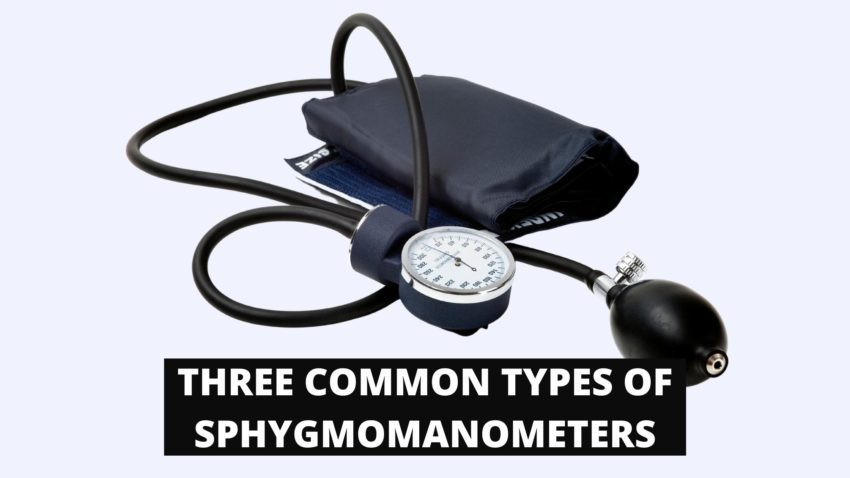
There are three types of sphygmomanometers most consumers and healthcare specialists use to monitor blood pressure.
These designs include aneroid, mercury, and digital sphygmomanometers (blood pressure monitors).
Furthermore, sphygmomanometers can operate manually or automatically, depending on your choice.
Manual sphygmomanometers use mercury or aneroid mechanisms to measure blood pressure.
Contrarily, digital sphygmomanometers use technology to measure blood pressure electronically.
Each device provides beneficial benefits for the operator based on their needs.
Mercury Sphygmomanometers
Mercury sphygmomanometers are the most reliable for measuring blood pressure.
Trained practitioners commonly use these devices, where accuracy is essential for observing vital health.
In addition, patients in high-risk healthcare situations often require these devices to identify potential medical issues or slight blood pressure changes.
Outside healthcare settings, it’s rare for individuals to own or use a mercury-based sphygmomanometer.
While mercury sphygmomanometers are highly accurate, they are expensive and unnecessary for essential blood pressure readings.
Additionally, mercury-based devices contain mercury, which can be highly poisonous if not used properly.
Mercury Sphygmomanometer Pros:
- Most accurate among the available sphygmomanometers
- Used and trusted by trained physicians
- Some devices can be wall mounted
In short, mercury sphygmomanometers provide high accuracy because they utilize highly sensitive mercury to measure vitals.
As a result, numerous trained physicians trust these devices.
However, they are used less commonly due to mercury’s poisonous properties.
Mercury Sphygmomanometer Cons:
- Very expensive
- Limited safe due to mercury content
- It may require a trained professional to operate safely
In summary, mercury devices are costly to produce and direct a trained professional to use.
Because of this, it’s not nearly as popular as Aneroid devices and blood pressure monitors.
Moreover, certain facilities and supplies may ban these devices because they use mercury liquids.
Aneroid Sphygmomanometers
Aneroid sphygmomanometers are very common and popular for essential blood pressure readings.
These devices typically cost a small fraction of their mercury-based cousin and are easy to operate.
Aneroid sphygmomanometers are also safer to use as they do not contain any mercury.
Healthcare centers, phlebotomists, registered nurses, and consumers commonly use these sphygmomanometers.
As a result, they tend to be the best manual blood pressure cuff for medical students and nurses.
Aneroid Sphygmomanometer Pros:
- Less expensive compared to mercury devices
- Some devices can be wall mounted
- Highly portable
- Healthcare professionals commonly use Android devices.
In brief, aneroid sphygmomanometers cost less to produce, are highly portable, and are regularly utilized by healthcare workers.
They are safer than mercury devices, making them a preferred alternative for home and professional applications.
There are a few downsides to aneroid models, but there are a couple of caveats.
Aneroid Sphygmomanometer Cons:
- Not consistently as accurate as mercury-based devices
- It may require operational knowledge to use it correctly
Although aneroid sphygmomanometers can be highly accurate, mercury-based units are considered the gold standard.
Furthermore, the reliability and performance can vary depending on the design and manufacturer.
Consequently, it’s essential to determine the reliability of a device before making a purchase.
Electronic Sphygmomanometers | Blood Pressure Monitors
Finally, digital/electronic sphygmomanometers or blood pressure monitors can operate manually or automatically.
Professional blood pressure monitors are seen in the pharmacy section of stores and are helpful in work settings.
However, these devices are usually relatively large and require the user to sit at the kiosk.
There are also portable consumer-grade units sold online to consumers at a fraction of the price.
Consumer-grade devices are great for those who want to monitor their blood pressure levels regularly.
Blood pressure monitors use electronic calculations and a BP cuff to measure blood pressure accurately.
Therefore, they don’t require a stethoscope to obtain an accurate reading.
Additionally, blood pressure monitors may offer historical tracking and data transfer for a user or a physician’s analysis.
Lastly, these devices don’t require any experience to operate.
In addition, the monitoring process is automated, so it’s easier to perform accurate readings consistently.
Digital Sphygmomanometer Pros:
- Most accessible to use among non-experienced users
- Frequently found in stores with pharmacies
- It doesn’t require a stethoscope for readings
- Popular among average consumers
To summarize, digital sphygmomanometers are extremely easy to use, making them high-popular among average consumers.
You can purchase these devices on sites like Amazon or in stores like Walgreens, Target, and Walmart.
Furthermore, blood pressure monitors don’t require a stethoscope and can display information on a digital screen.
Digital Sphygmomanometer Cons:
- It may not be as accurate as manual devices
- Requires batteries or power supply to operate
In conclusion, digital sphygmomanometers/blood pressure monitors vary based on technology and design.
As a result, professionals may prefer an aneroid device, especially if the digital device’s accuracy isn’t confirmed.
However, it also requires a power source to work, which can be annoying for those who use the device frequently.
Final Thoughts on Each Design
As you can see, the best sphygmomanometer for personal or work use can differ depending on its use case and the individual’s needs.
Some physicians or specialists use mercury sphygmomanometers for highly accurate blood pressure readings for patient evaluations.
Because they are mercury-based and expensive, these devices are not standard in non-medical environments.
Aneroid sphygmomanometers are cost-efficient and used by registered nurses, students, phlebotomists, and consumers.
These devices are standard in low-risk healthcare professions that require simple blood pressure checks.
A quality aneroid sphygmomanometer provides adequate accuracy, and its lightweight, portable design makes it ideal for carrying around.
Digital sphygmomanometers are best for pharmaceutical and consumer use.
They don’t require operational experience and can help track blood pressure levels.
These devices vary from twenty dollars to several hundred dollars depending on their features, accuracy, and build quality.
Numerous options are available for people who want to track their blood pressure for health purposes.